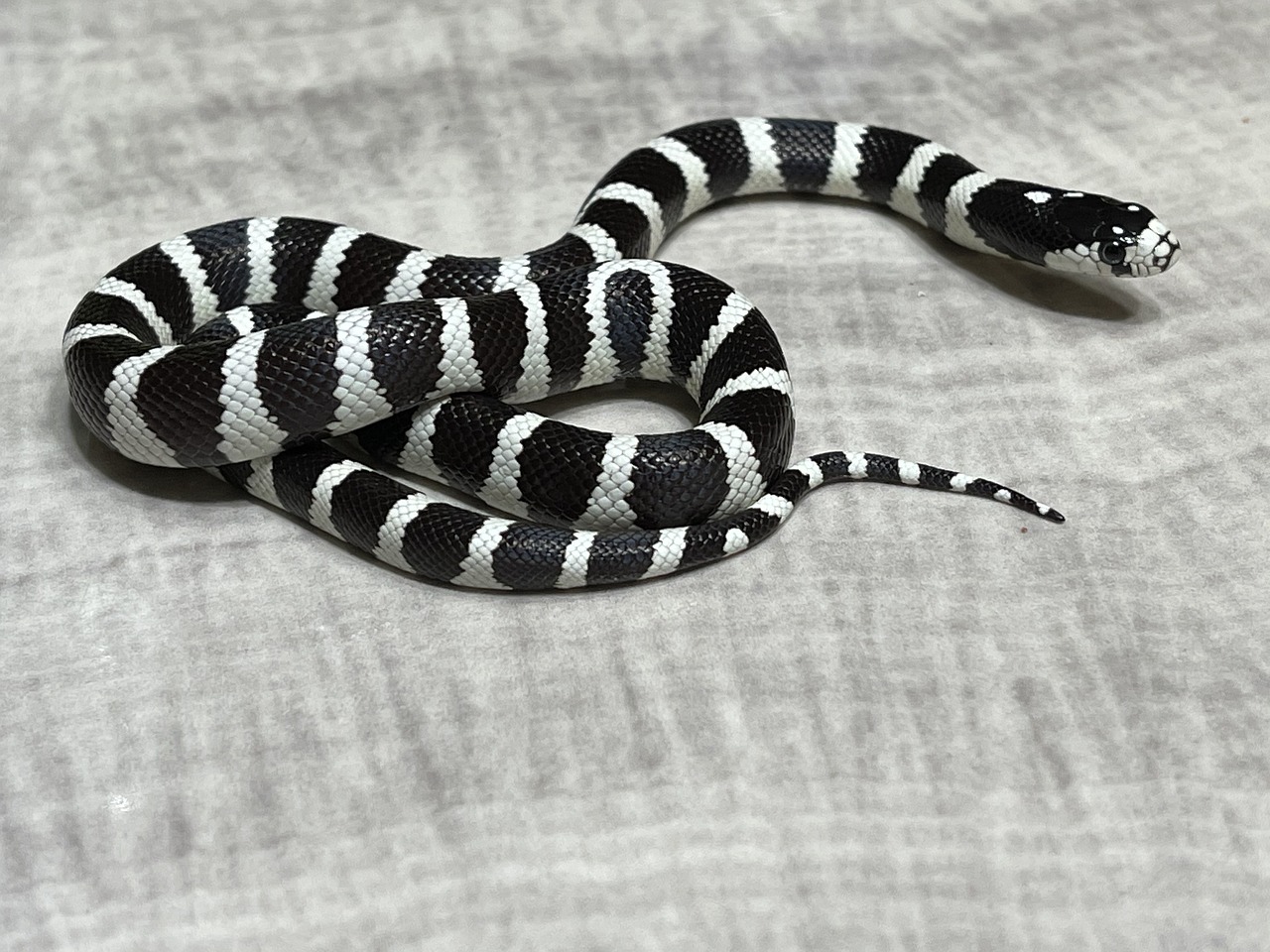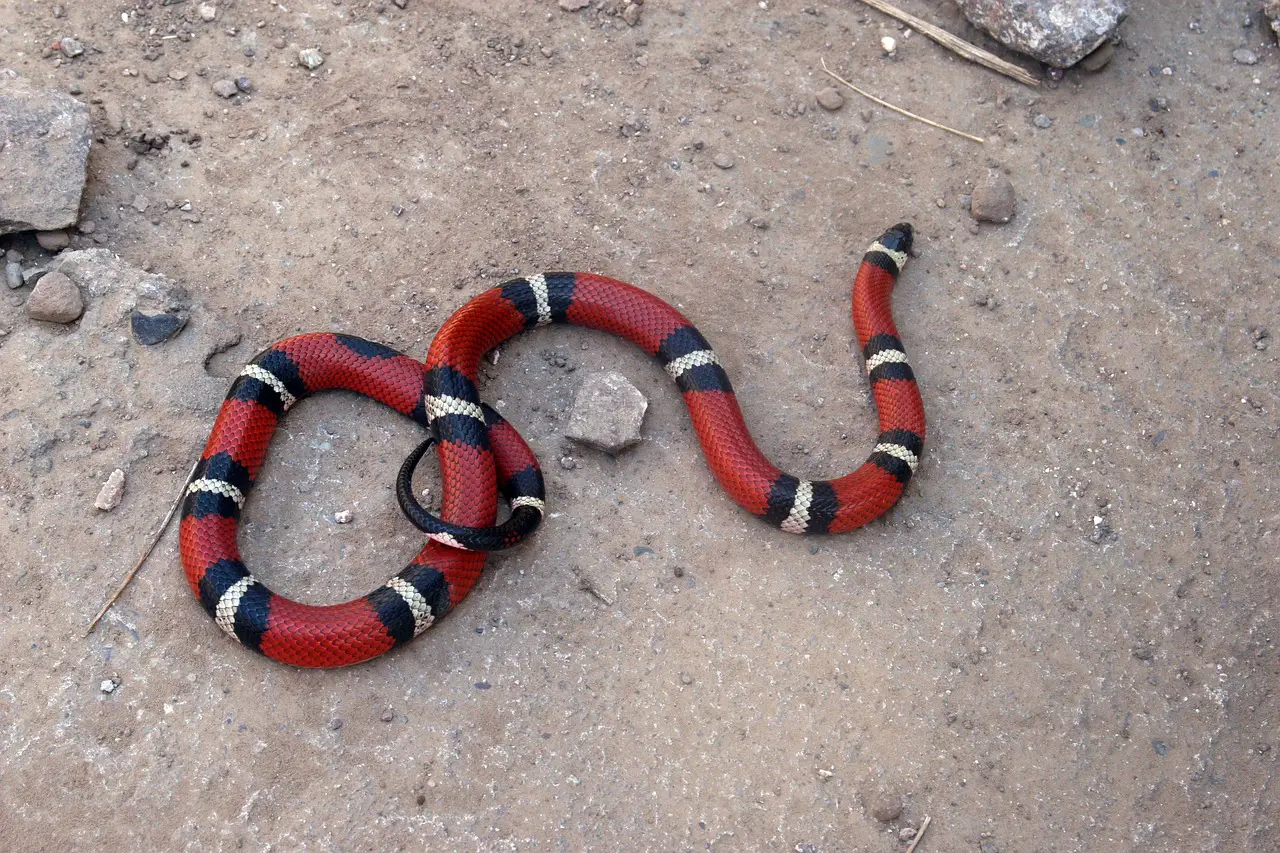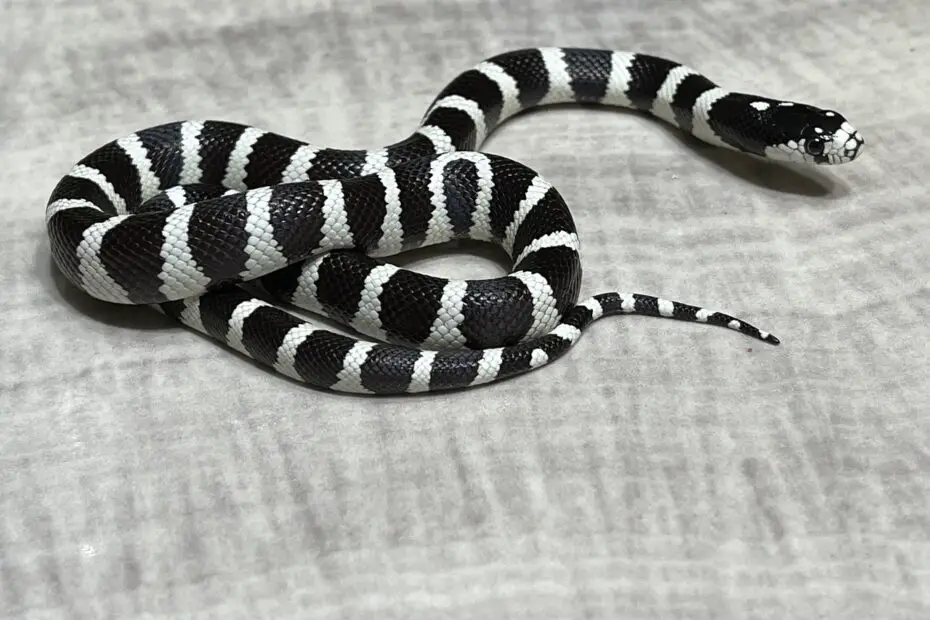How to know the difference between a coral or king snake? In the vast world of snakes, two captivating species stand out: the coral snake and the king snake. These serpents are known for their striking appearances and fascinating behaviors.
In this article, we will explore the characteristics of the coral snake and the king snake, compare their unique traits, examine their cultural significance, discuss their portrayal in pop culture, and shed light on conservation efforts aimed at protecting these magnificent creatures.
You may also want to read about the 10 deadliest snakes.
The Coral Snake: A Colorful Beauty
Appearance and Characteristics
The coral snake (Micrurus spp.) is renowned for its vibrant and eye-catching coloration. With its bands of red, yellow, and black, this snake displays a distinct pattern that warns potential predators of its venomous nature. Its slender body and smooth scales contribute to its graceful movement, making it an intriguing sight in its natural habitat.
Habitat and Distribution
Coral snakes are primarily found in tropical and subtropical regions, including parts of North America, Central America, and South America. They prefer habitats such as forests, marshes, and scrublands. Their secretive nature and nocturnal behavior make them elusive and often difficult to encounter.
The King Snake: The Regal Constrictor
Physical Features
Unlike the coral snake, the king snake (Lampropeltis spp.) boasts a more diverse range of coloration. Some species exhibit bold bands of black and white, while others display striking combinations of red, yellow, and black. Their powerful bodies and muscular build allow them to be formidable constrictors, overpowering their prey with precision.

Ecological Importance
King snakes play a crucial role in controlling rodent populations, making them valuable assets in ecosystems. They are known for their ability to consume venomous snakes, including other species of snakes that humans often fear. This unique adaptation helps maintain a balance in the food chain and prevents an unchecked proliferation of potentially harmful reptiles.
Comparison of Coral Snake and King Snake
Coloration and Patterns
Coral or king snake? While both the coral snake and the king snake exhibit bands of red, yellow, and black, they can be distinguished by their arrangement. The coral snake displays a pattern of red and yellow bands separated by thin black bands. In contrast, the king snake showcases a pattern of wide black bands interspersed with colored bands.
Venomous or Harmless?
Coral or king snake? One key aspect that sets these snakes apart is their venom. The coral snake is venomous, possessing potent neurotoxins that can be dangerous to humans. On the other hand, the king snake is non-venomous and poses no threat to humans. This important distinction in their venomous capabilities makes the king snake a safer species to encounter in the wild.

Coral or King Snake in Pop Culture
Cultural Significance
Both the coral snake and the king snake have made their mark in cultural beliefs and folklore. The coral snake’s venomous nature has led to its portrayal as a symbol of caution and danger. In some regions, its distinct color pattern has been associated with warnings, cautionary tales, and even nursery rhymes.
Conversely, the king snake has often been revered for its ability to prey on venomous snakes, earning it a reputation as a protector and a symbol of strength and resilience. In some Native American cultures, the shedding of a king snake’s skin represents renewal and transformation.
Representations in Media
Snakes, including the coral snake and the king snake, have been depicted in various forms of media. From literature and art to movies and television shows, their presence often carries a sense of mystery, intrigue, and danger. They are frequently portrayed as captivating characters that embody both fear and respect.
Conservation of Coral Snakes and King Snakes
Threats to Their Survival
Both coral snakes and king snakes face challenges to their survival. Habitat loss and fragmentation, due to human activities such as deforestation and urbanization, pose significant threats to their populations. Additionally, indiscriminate killing and collection for the exotic pet trade further endanger these species.
Conservation Efforts
Conservation efforts aimed at protecting coral snakes and king snakes focus on habitat preservation, raising awareness, and promoting responsible pet ownership. Organizations work to educate the public about the importance of these snakes in ecosystems and discourage the illegal wildlife trade. By supporting these initiatives, individuals can contribute to the conservation of these remarkable snakes.
Conclusion
The coral snake and the king snake exemplify the diversity and wonder of the serpent world. Their distinctive coloration, behaviors, and cultural significance make them captivating creatures to study and appreciate. While the coral snake’s venomous nature demands caution, the king snake’s role as a predator of venomous snakes earns it respect. By understanding and protecting these snakes, we can ensure their place in the natural world for generations to come.
FAQs
- Are coral snakes and king snakes aggressive toward humans? Neither coral snakes nor king snakes are inherently aggressive toward humans. They typically avoid confrontation and will only bite if they feel threatened or cornered.
- Are coral snakes more venomous than other venomous snakes? Coral snakes possess potent venom, but their bites are relatively rare due to their secretive nature. Other venomous snakes, such as vipers and cobras, may pose a greater risk to humans due to their more frequent encounters.
- Can king snakes be kept as pets? Yes, many species of king snakes are popular as pets. However, it is important to ensure they are obtained legally from reputable breeders and that proper care requirements are met to ensure the snake’s well-being.
- Do coral snakes and king snakes have any ecological value? Yes, both coral snakes and king snakes play important roles in ecosystems. Coral snakes help control small mammal populations, while king snakes contribute to the balance of predator-prey relationships by consuming rodents and other snakes.
- What should I do if I encounter a coral or a king snake in the wild? It is best to observe these snakes from a safe distance and not attempt to handle or disturb them. Appreciate their beauty from afar and allow them to continue their natural behaviors without interference.
